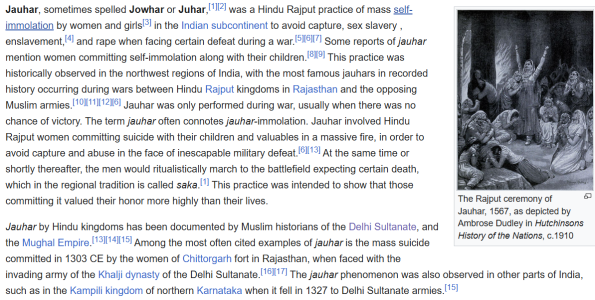Major
ODI Star
- Joined
- Aug 28, 2013
- Runs
- 35,361
- Post of the Week
- 7
Sati—one of the most controversial and haunting practices in history. A ritual that saw widows immolating themselves on their husband's funeral pyres. But where did it come from? And why did it last for centuries?
The term Sati comes from Sanskrit, meaning "a virtuous woman." It is said to have mythological roots in the story of Goddess Sati, who self-immolated in protest against her father’s insult toward her husband, Lord Shiva. But what started as a divine narrative later turned into a brutal social custom. For centuries, particularly in parts of India, widows—sometimes willingly, often by force—were expected to jump into the flames alongside their deceased husbands. This practice was seen as the ultimate act of devotion and purity. But was it really about honor? Or was it a way to control and erase widows from society?
Several factors played a role in its continuation. Patriarchy viewed widows as burdens, and Sati was framed as an "honorable" escape. Religious justifications emerged from misinterpreted texts. Social pressure played a major role—many women were coerced, sometimes drugged or pushed into the flames.
The fight against Sati gained momentum in the 19th century. Reformers like Raja Ram Mohan Roy played a crucial role, leading to its formal ban by the British in 1829. Yet, occasional incidents persisted, proving that deep-rooted traditions don’t vanish overnight. Although legally banned, the last widely reported case was in 1987, when Roop Kanwar, an 18-year-old woman in Rajasthan, was forced onto her husband’s funeral pyre. While not practiced today, the glorification of Sati in some places remains a concern.
Sati wasn’t just about fire—it was about oppression, power, and control. A widow’s life should never be dictated by outdated traditions.
Sati Practice in modern days
In May 2023, a tragic incident occurred in Ahmedabad, Gujarat. A woman named Sangita Lakhra died by suicide after allegedly being harassed and taunted by her in-laws for not performing Sati following her husband's death. Reports indicate that her in-laws pressured her to transfer property and insurance money, and she faced ridicule for not adhering to the outlawed practice. The Times of India
Additionally, in October 2024, a Jaipur special court acquitted eight individuals accused of glorifying the Sati act of Roop Kanwar, an 18-year-old woman who died in 1987. This case, often cited as India's last known instance of Sati, led to the enactment of The Commission of Sati (Prevention) Act in 1987. The recent acquittal highlights ongoing legal and societal challenges related to this practice.
The term Sati comes from Sanskrit, meaning "a virtuous woman." It is said to have mythological roots in the story of Goddess Sati, who self-immolated in protest against her father’s insult toward her husband, Lord Shiva. But what started as a divine narrative later turned into a brutal social custom. For centuries, particularly in parts of India, widows—sometimes willingly, often by force—were expected to jump into the flames alongside their deceased husbands. This practice was seen as the ultimate act of devotion and purity. But was it really about honor? Or was it a way to control and erase widows from society?
Several factors played a role in its continuation. Patriarchy viewed widows as burdens, and Sati was framed as an "honorable" escape. Religious justifications emerged from misinterpreted texts. Social pressure played a major role—many women were coerced, sometimes drugged or pushed into the flames.
The fight against Sati gained momentum in the 19th century. Reformers like Raja Ram Mohan Roy played a crucial role, leading to its formal ban by the British in 1829. Yet, occasional incidents persisted, proving that deep-rooted traditions don’t vanish overnight. Although legally banned, the last widely reported case was in 1987, when Roop Kanwar, an 18-year-old woman in Rajasthan, was forced onto her husband’s funeral pyre. While not practiced today, the glorification of Sati in some places remains a concern.
Sati wasn’t just about fire—it was about oppression, power, and control. A widow’s life should never be dictated by outdated traditions.
Sati Practice in modern days
In May 2023, a tragic incident occurred in Ahmedabad, Gujarat. A woman named Sangita Lakhra died by suicide after allegedly being harassed and taunted by her in-laws for not performing Sati following her husband's death. Reports indicate that her in-laws pressured her to transfer property and insurance money, and she faced ridicule for not adhering to the outlawed practice. The Times of India
Additionally, in October 2024, a Jaipur special court acquitted eight individuals accused of glorifying the Sati act of Roop Kanwar, an 18-year-old woman who died in 1987. This case, often cited as India's last known instance of Sati, led to the enactment of The Commission of Sati (Prevention) Act in 1987. The recent acquittal highlights ongoing legal and societal challenges related to this practice.













